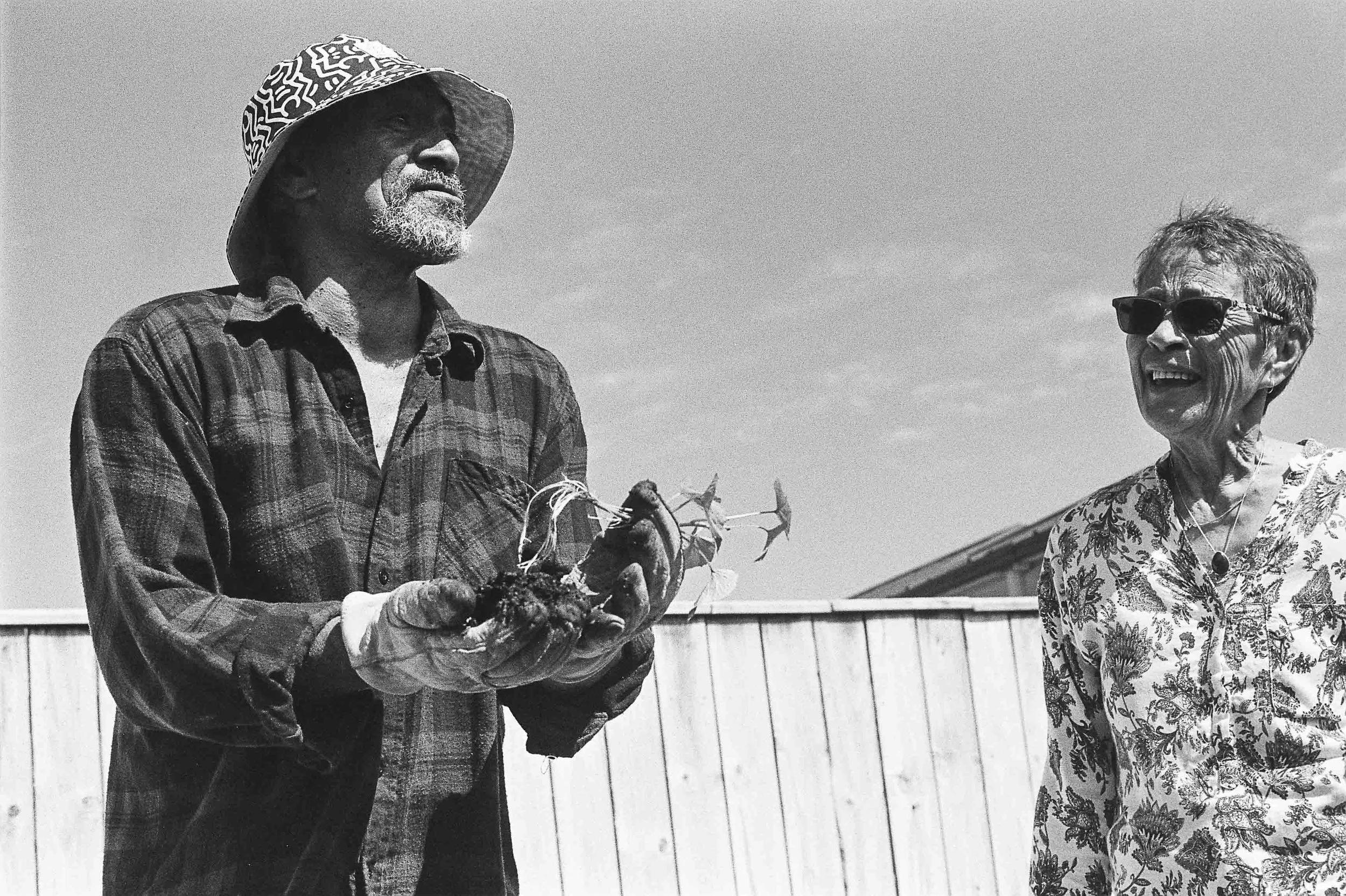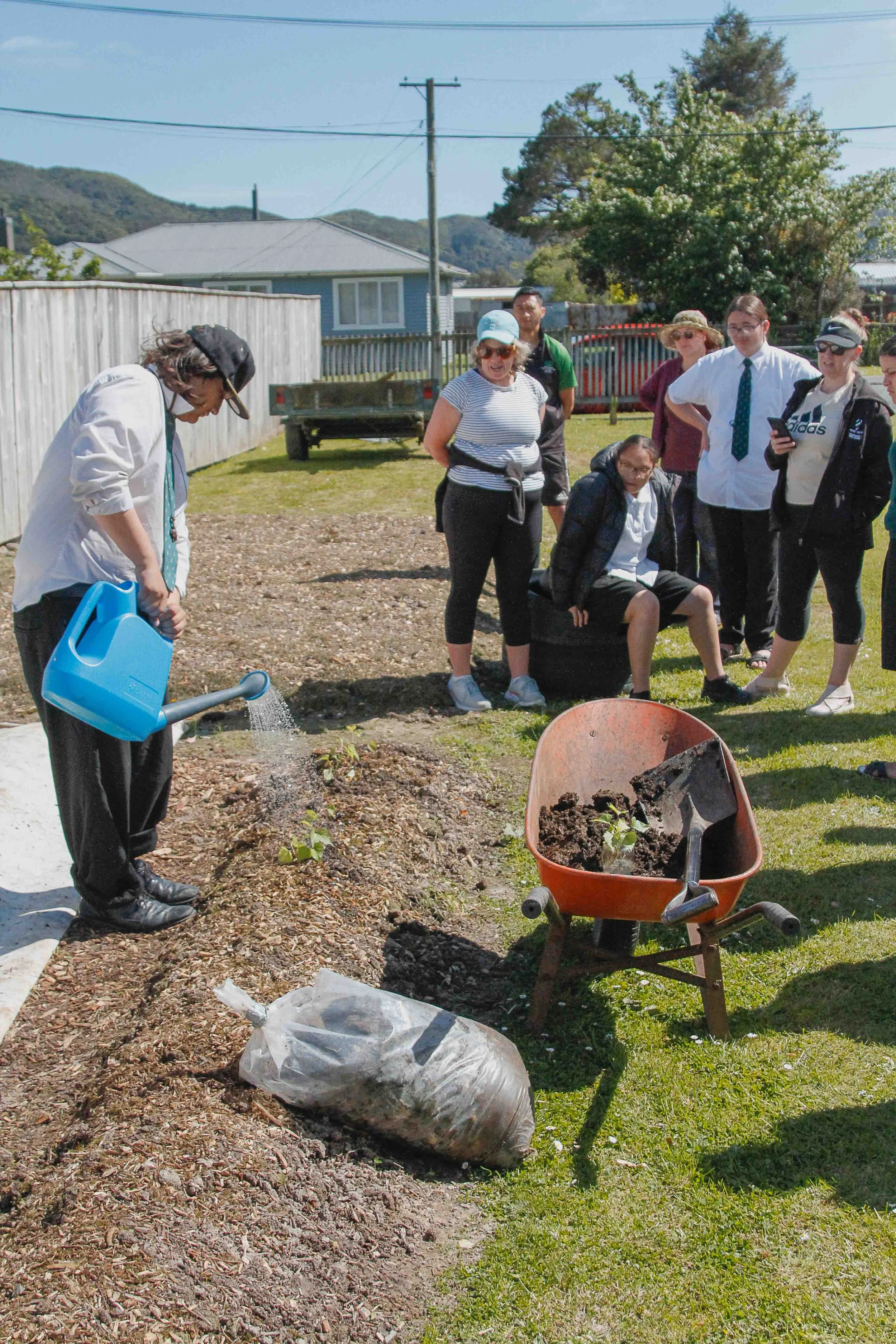Growing Kūmara from Tipu
Mātauranga: This knowledge was passed from Sandy a local Wainuiomata resident and Ed who is kaitiaki of the Kokiri Marae Pātaka māra, in Wainuiomata. These techniques were shared in a wānanga run in late October, when the soil had warmed.
Sharing this knowledge of the connection between kūmara and Aotearoa to ensure this knowledge is passed on and shared.
Starting tipu from a Seed Kūmara
To grow kūmara, you have to first grow kūmara tipu/slips. These are the sprouts that come off of the kūmara.
There are many different ways to grow your Kūmara tipu/ slips.
The two methods that we used were in water or soil/ sand mixture
1. Water - Submerge ½ the quantity of a kūmara in a jar of water, point the kūmara downwards, and leave until tipu/ slips form. If the tipu are starting to appear stressed (yellowing or browning) then add a bit of fertilizer like worm wee. And change the water regularly.
2. Soil - Place a small layer of sand in a container, add kūmara, and then cover with a mixture of sand, soil, brown leaves, and grass clippings and then add more sand on top to compact the layler's down.
Water well. Place the container in a plastic bag and place is a warm spot until tipu show. Approx 2 months.
kūmaras sprout after they break dormancy. You can encourage your kūmara to break dormancy by putting it in a warm room in either a glass of water or some soil.
Taking the tipu off the kākano and Helping it develop strong roots
Do this mahi in the late evening not in the daytime as not to dehydrate the tipu
Remove the tipu from the base of the seed kūmara, put in straight back into the same soil the seed kūmara and keep the soil warm, and moist for a few days to grow stronger roots.
☆ Tip From Teina- Maramataka, full moon to Takirau is a good time for this part then planting out in the tangaroa moons for stage. Energy for the marama is being pulled towards the puku of the whenua so this feeds the roots and makes for stronger growth systems.
Preparing the bed
Bed - When planting your Kumara tipu directly into Your Māra it's best to plant them in Mounded rows.
















